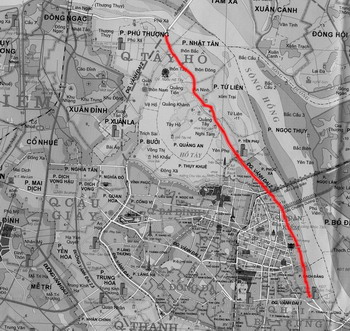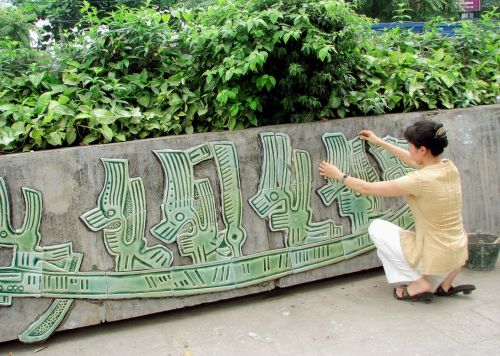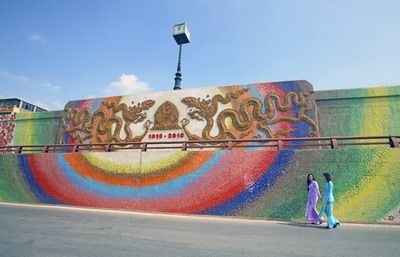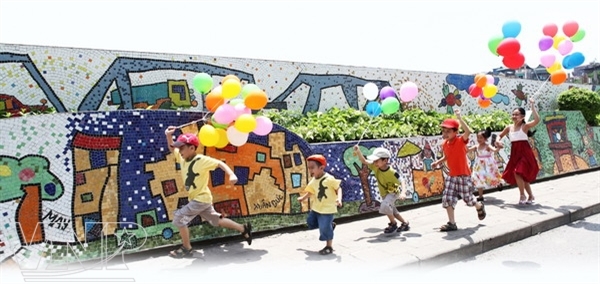Vandalism or creativity? How much of this is considered an expression of art, and how much of this is considered damaging public properties?
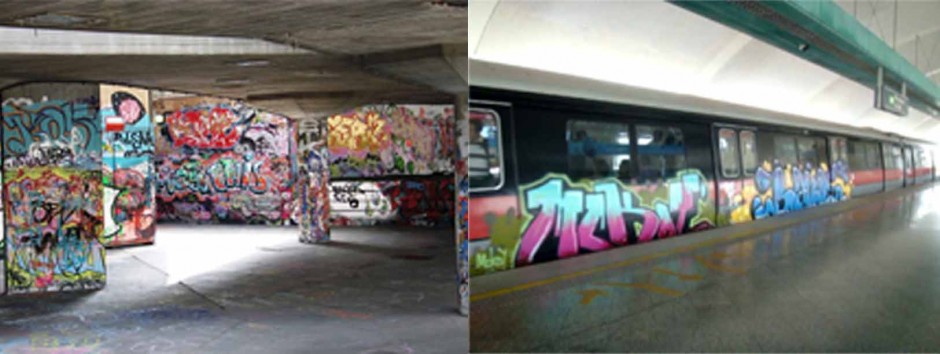
(Photo Left) Graffiti Skate Park in Inner London, UK (taken from everwheremag.com), Vandalised train in Singapore (taken from sgforums.com)
Yes, I am talking about graffiti. Graffiti refers to drawings or scribbles created illicitly on public surfaces such as walls. Just two years ago, a Swiss National was charged for spray-painting Singapore’s metro train with graffiti. Yet as I walked along the skate parks in London, UK or along the back alley to my house, I see really interesting and pretty drawings on the walls. Which of those drawings are considered vandalism? I really do not know …

Drawings on the walls along West 41st, Collingwood (Vancouver)
Similar to the topic of graffiti – but not entirely alike (as this was done with permission and it’s a different kind of artwork) – The Hanoi Ceramic Mosaic Mural achieved the World’s Guinness Record (2010) of the world’s largest ceramic mosaic. Running along the concrete walls of the city’s Red River dike, this 4 km long piece of artwork was initiated by artist and journalist Nguyen Thu Thuy.
As she was witnessing the excavation at Hanoi’s Thang Long Citadel archaeological site, Thu Thuy was very interested in the artifacts that show the flow of history through the Vietnam dynasties (Ly, Tran, Le and Nguyen). Drawing inspiration from her outdoor pottery visits in Europe, she started to ponder on how she could apply the ‘immortality of pottery’ to Hanoi. She thought about decorating the grey, concrete dike that she passed by everyday, and started to break some ceramic pot and bowls and used Photoshop to create the pilot picture of mosaic.
Currently, the artwork consists of 21 sections with different themes reflecting the Vietnamese culture and dynasties, such as art patterns from different eras and ethnic groups. There are also pottery artworks by international painters and Vietnamese and international children with the theme “I love Hanoi.” In fact, many adults love the children’s work as it reminds them of their childhood. As one of the organizers stated, “the children are the future of a country. We want them to be involved because we would like them to know that they can beautify the country.”
As I read about this tourist attraction, it dawned upon me that even the course of completing this artwork could reflect a strategic design process. Those walls could easily invite vandalism, but the problem was reframed and viewed in a different angle to realize an opportunity. When Thu Thuy had an idea, she prototyped it first using the resources she had. And last but not least, the walls reflected the lives of the users – the memorable childhood they had!

